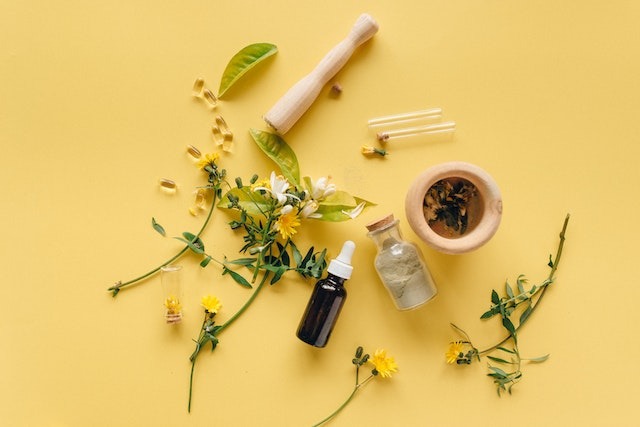
In the world of homeopathy and herbal medicine, pulsatilla has a stellar reputation as a potent remedy. Period discomfort and conjunctivitis are only two of the conditions that pulsatilla has been used to treat. It is also common knowledge that poorly produced pulsatilla can cause irritation. Traditional medicine often advises against taking it due to the risk of undesirable side effects.
But what really is the scoop about pulsatilla homeopathic treatment? A pulsatilla may be completely new to you. Are there any benefits to taking pulsatilla for anxiety? How often can you use pulsatilla? If this is the case, we have every answer.
What Is Pulsatilla?
In addition to its natural ranges in Europe and southwestern Asia, pulsatillas may also be found in the Mediterranean region. The pasqueflower is another name for this plant. As a member of the genus Pulsatilla, it is also referred to by the common names anemone pulsatilla and pulsatilla vulgaris.
The bloom, when it’s on the ground, is a stunning shade of purple. Once it has been gathered and dried, the plant is turned into a strong material that may be employed in traditional medicine. The ranunculin in the Pulsatilla plant changes into the anemone after it is dried. This anemone is the key element in a number of medicinal applications.
What Is The Purpose Of Pulsatilla?
Pulsatilla is used in both homeopathic and herbal remedies because practitioners of both alternative medical modalities feel that they can benefit from the plant’s inherent therapeutic capabilities.
While both procedures include plants in their preparations and have their origins in traditional herbal medicine, there are important differences between the two.
Homeopathy
For homeopathy to operate, a plant has to be taken in modest quantities to have the same impact as a big dosage of the same plant. Plant preparations used in homeopathy are often very diluted, with just a minute fraction of the original active component remaining. Homeopathy is not acknowledged as an effective type of treatment by conventional medicine, and there are not enough study articles to support its usage.
Herbalism
Herbalists utilize plant preparations to extract the medicinal ingredients and administer them to patients. For instance, essential oils are made from highly concentrated plant extracts that have been proved to have certain effects, such as preventing the growth of microbes or reducing emotions of stress and worry. Traditions of Ayurveda and TCM share a foundation in herbalism.
Common Uses of Pulsatilla in Homeopathy and Other Herbal Medicines
It has antispasmodic properties.
Pulsatilla homeopathic medication is thought to help ease muscular spasms, and it has been found to help treat painful spasmodic disorders including period pain. The scientific literature confirms this. Pulsatilla has been proven in one research to have anti-spasmodic qualities, making it capable of lowering the severity of muscular spasms.
For the treatment of eye disorders
In complementary and alternative medicine, pulsatilla is employed for the treatment of conjunctivitis and other conditions affecting the eyes.
Although there is no scientific backing for homeopathy, one research did find that a 30C dilution of pulsatilla homeopathic medication alleviated eye complaints in canines.
Used for eradicating vaginal infections
Preliminary study shows the pulsatilla plant may aid in the eradication of vaginal bacterial infections like candida, but it is not yet a usual treatment choice. One study found that a concentrated version of dried pulsatilla inhibited the development of candida.
Use it as a tranquilizer or stress reliever.
Herbalists have long recognized pulsatilla as an useful remedy for period pain and the emotional symptoms of PMS, such as irritability and depression.
A 1905 publication suggested that pulsatilla might be helpful for women who are extremely emotional and frequently weep.
The active component of pulsatilla homeopathic medicine is anemone, which has a sedative effect on the central nervous system, and this may explain why it works. As a consequence, your pulse and respiration rate will gradually decrease.
To aid pregnant women and their moms
Some people, based on pulsatilla’s traditional usage in homeopathy, think it can help turn breech infants before delivery. As pulsatilla has been demonstrated to help relax the muscles of the uterine wall, it may also stimulate the baby to turn. Due to the scarcity of data, a medical expert should always be consulted before using pulsatilla during pregnancy.
Possible Pulsatilla Adverse Effects
Pulsatilla vulgaris, in its fresh state, must be labeled as toxic because it contains compounds that can be irritating and hazardous. Pulsatilla vulgaris gets its deadly reputation from a compound called ranunculin, which is only present in newly harvested plants.
Pulsatilla, especially when newly harvested, can irritate your skin and mucous membranes.The digestive, renal, and urinary systems can all be aggravated by ingesting fresh pulsatilla. Since this is the case, pulsatilla should only be used after it has been dried and processed.
In order to remove the toxicity from fresh pulsatilla, it must be sliced or crushed in the presence of water before being freeze-dried. This step must be completed before freeze-drying may begin. Homeopathic pulsatilla has been associated with allergic reactions. A woman got chemical burns when she tried to give herself a massage using newly sliced pulsatilla, not realizing that the plant was dangerous while it was so young.
Conclusion
The positive effects of pulsatilla homeopathic medication on the user are conditional on factors such as age and overall health. Due to a paucity of scientific evidence, the appropriate dose range for pulsatilla has yet to be determined. Keep in mind that even natural remedies have their risks, and that finding the right dosage is essential. It is important to consult your doctor, pharmacist, or other healthcare professionals before using any new medication.
Hey welcome to my blog . I am a modern women who love to share any tips on lifestyle, health, travel. Hope you join me in this journey!

Speak Your Mind